Ok, so the first pour was a trainwreck. I did learn one thing though: concrete is a lot runnier when it's being shaken around. This explains all the concrete-vibrating equipment that I've seen references to - it's not just useful for getting the air bubbles out, it also helps the concrete act like a liquid. It's like when you played with wet sand as a kid and could make it all liquid-y by patting the surface.
So, I grabbed a beat-up corded drill, and turned it into a concrete vibration machine. I found a long bolt, screwed a bunch of heavy washers and nuts on, and bent an angle in it so the weight would be offset. I then secured this in the drill chuck, and when running at full speed, it'll just about shake your hands off. Using clamps, we could hold this up against the wood form, shaking the entire form.
I also realized that a horizontal form would be much more sane, so I laid it down, took the right side off, and added a board for the 'bottom'. I also had to fix the pulled-out screws and gaps that formed during the first attempt. This made for much better visibility and didn't involve pouring concrete from the top of a ladder.
Finally, I learned that I needed better reinforcement. I got some real rebar, and cut it with a cut-off blade in a chopsaw. I the bent some 45-degree angles using some boards, a make-shift vice (a car), and some iron pipe. I laid out some rebar in my form, holding it in the middle of the form using some string, and tied it together as well as I could with bailing wire.
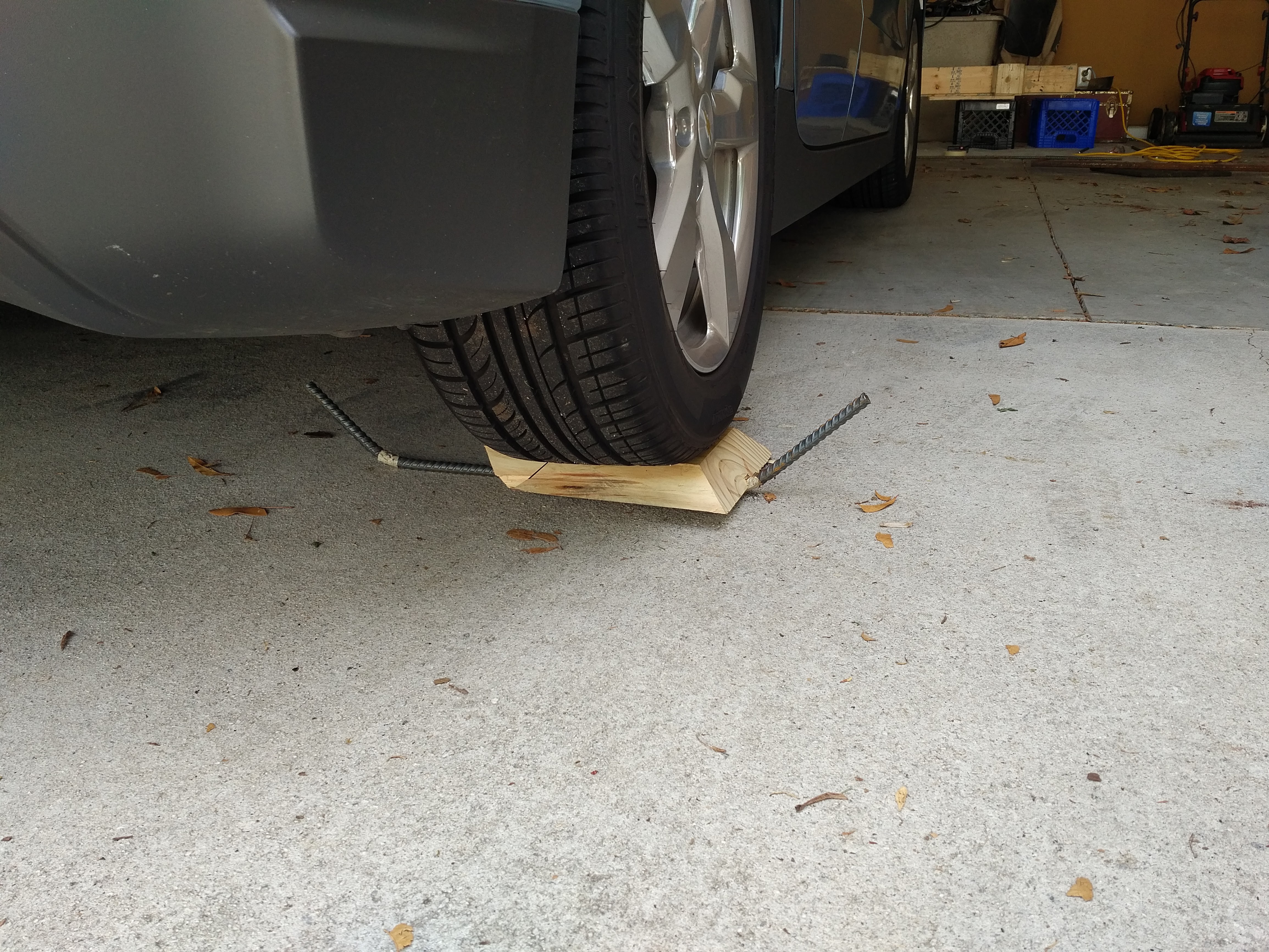
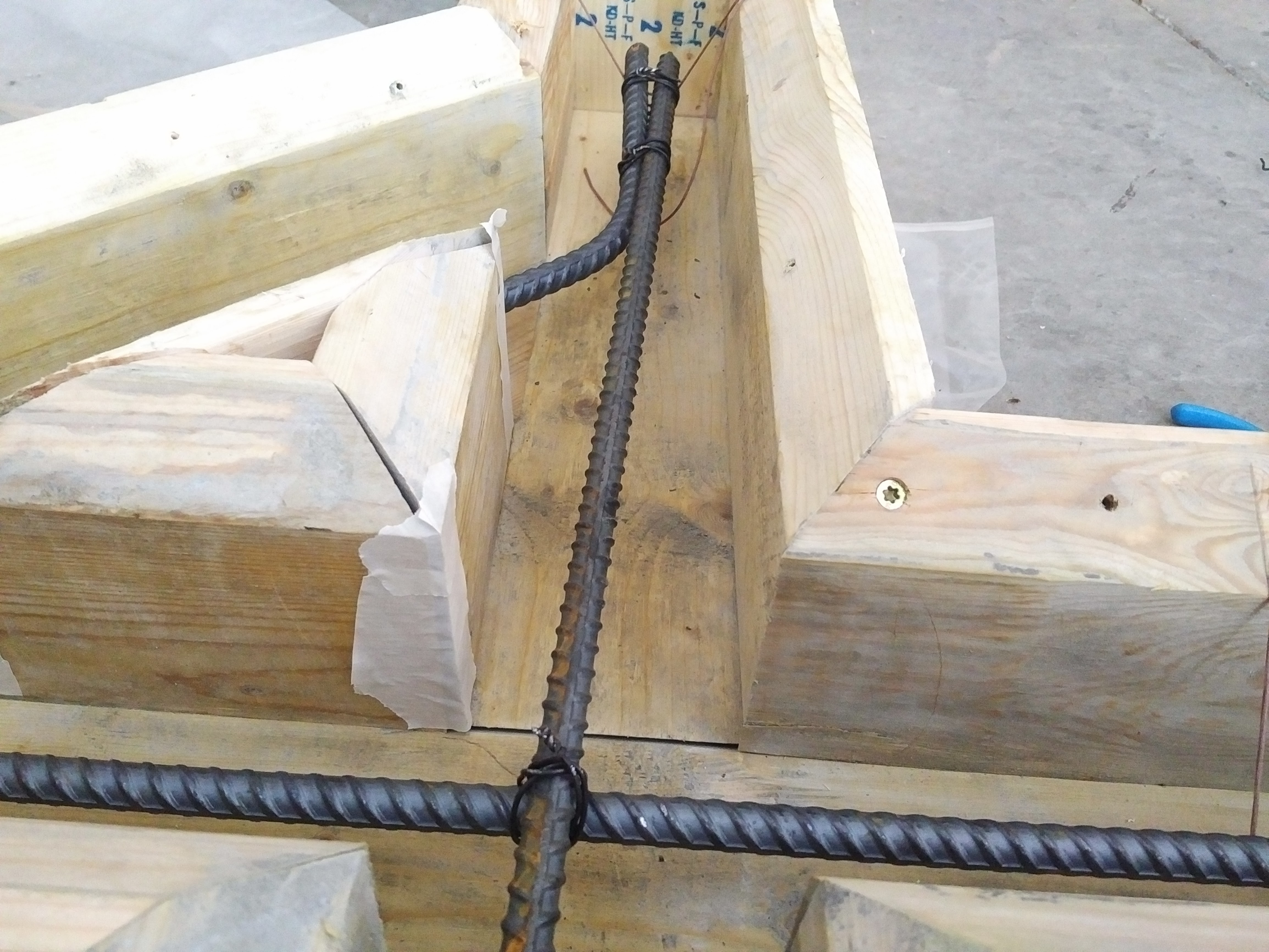
We started mixing concrete again. We used a sane amount of water this time (within the manufacturer's stated amount), and poured it into the form. One bucket was about a third of a mailbox post. It was massively thick, but upon firing up our drill-turned-vibrator, it all smoothed out over more than a minute. It was working!
We also had gotten a drill-attached paint mixer, and used that for mixing the concrete. It worked wonders, and meant that we could mix the concrete much faster, which gave us more time to mess with it before it started to thicken.
We mixed two more buckets of concrete and added them in, moving the drill-vibrator to several places on the form, and loosing the feeling in our hands in the process. Once we got it 'full', we smoothed off the top using a board.
One disadvantage of pouring sideways was that the top side wouldn't get nice joints and wood grain from the form, which is important for a concrete post pretending to be wood. We stenciled in fake joint lines just to see if it helped the illusion of 4x4 post construction.
Now, we wait for it to cure.
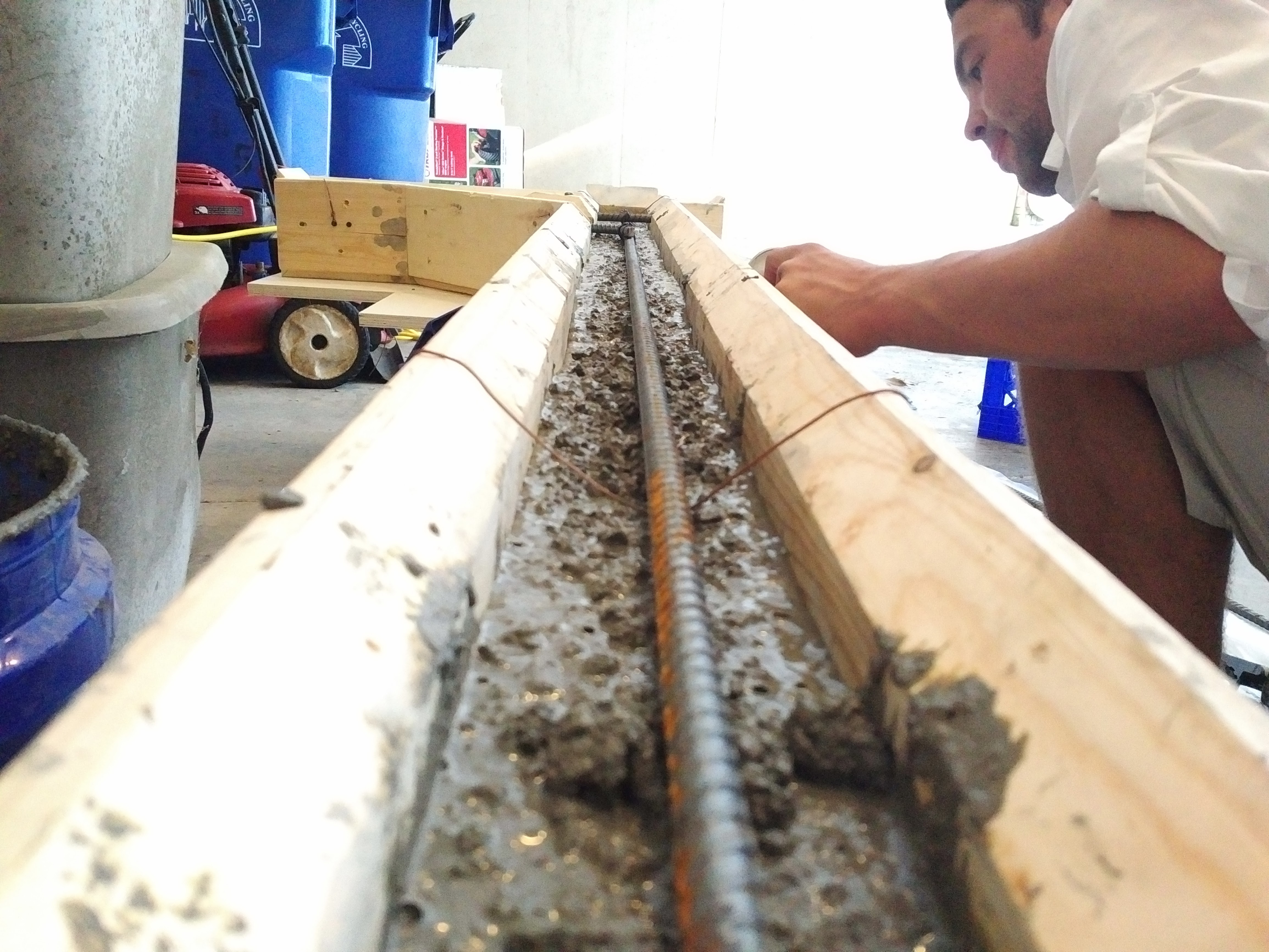
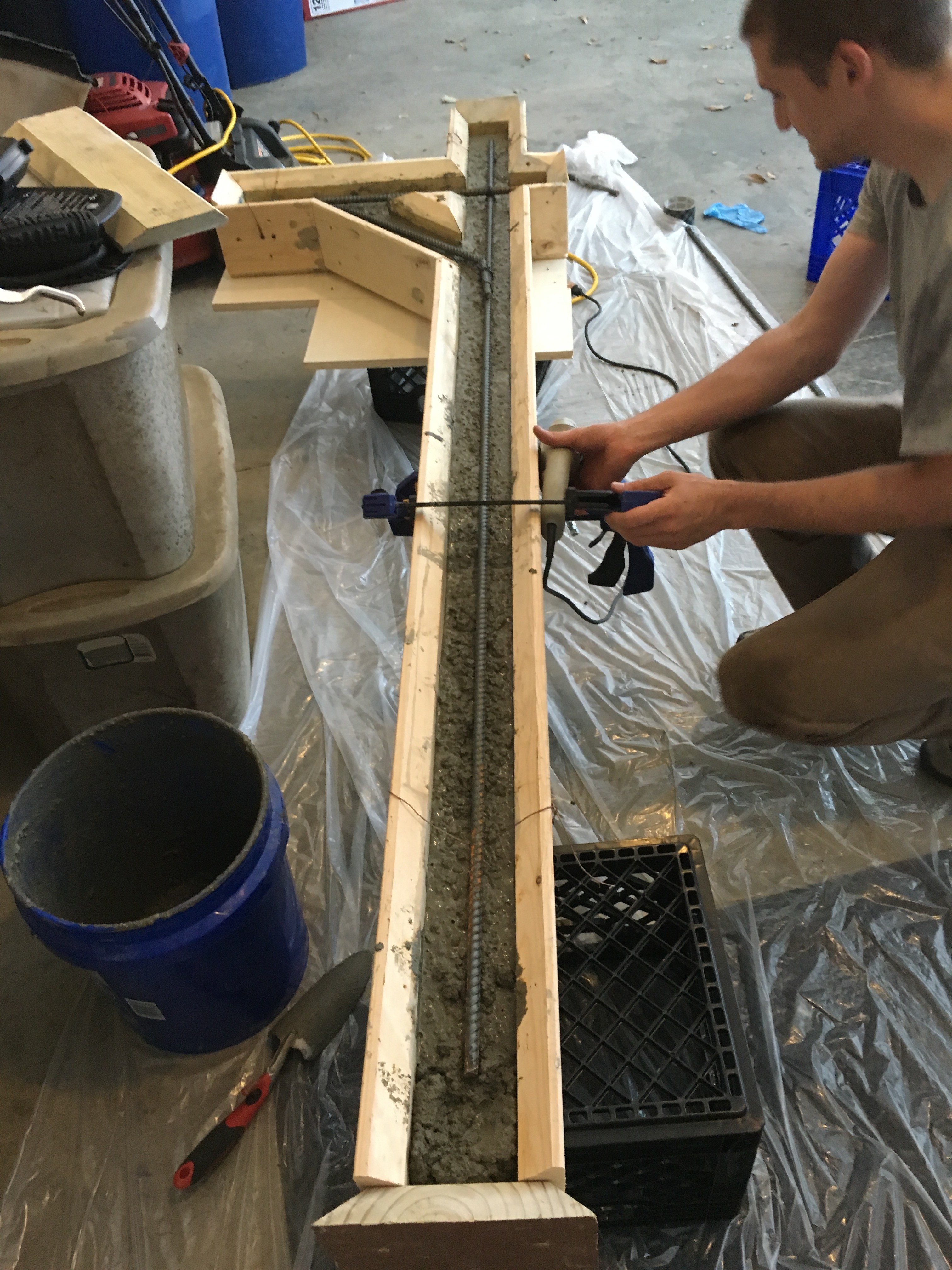

Caution: Video of the vibration is loud.
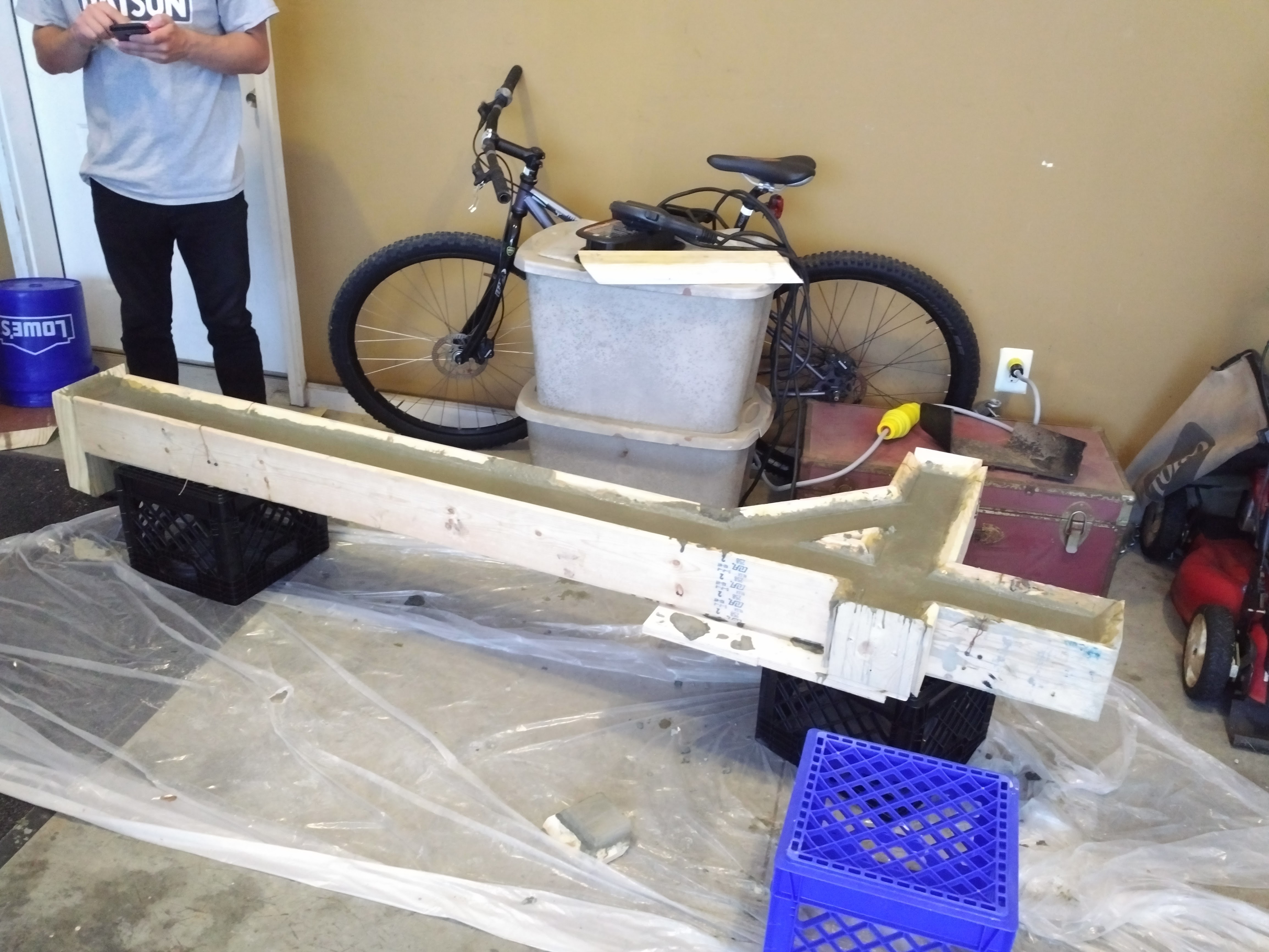
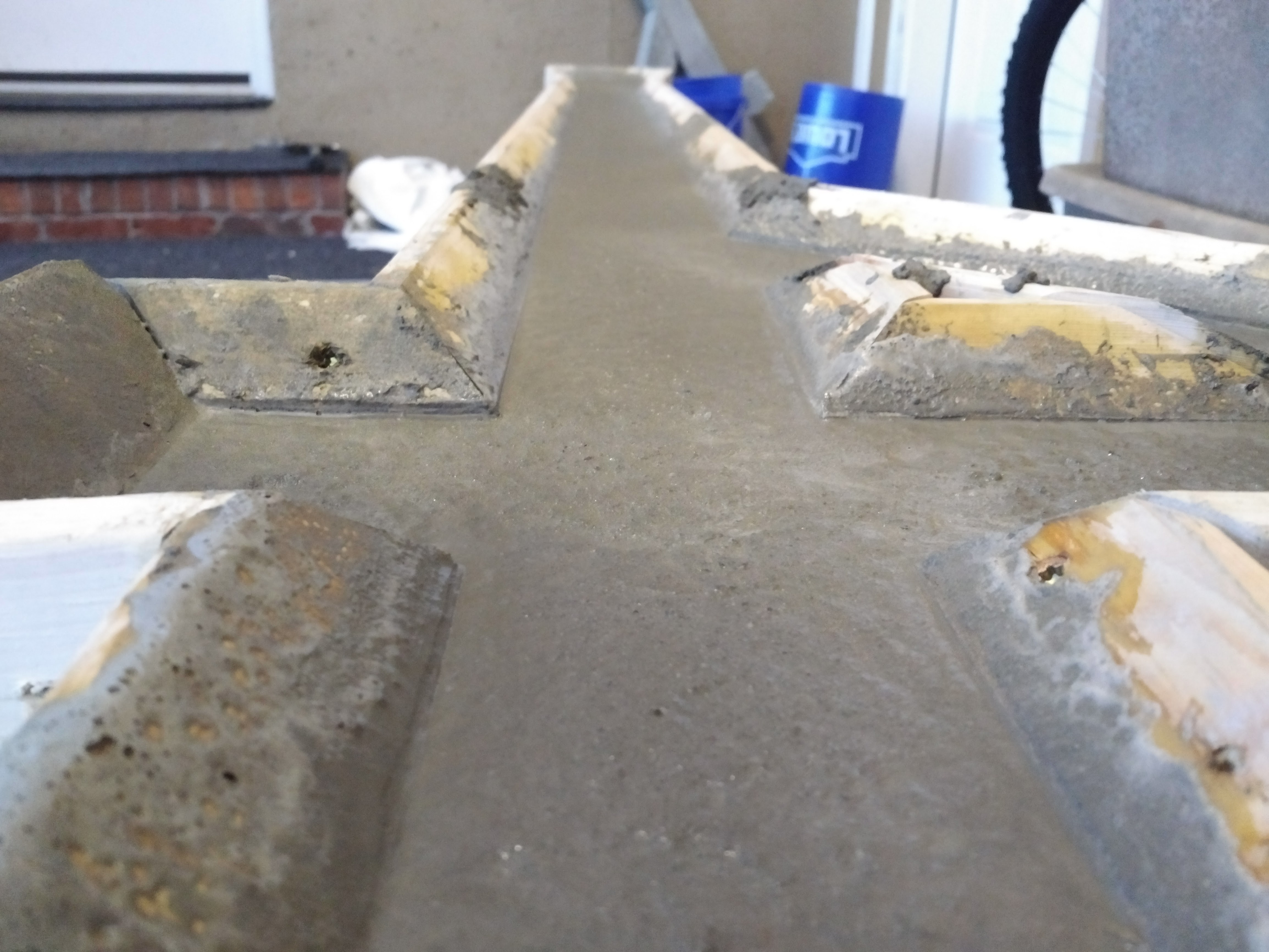
 Scott G
Scott G
Discussions
Become a Hackaday.io Member
Create an account to leave a comment. Already have an account? Log In.